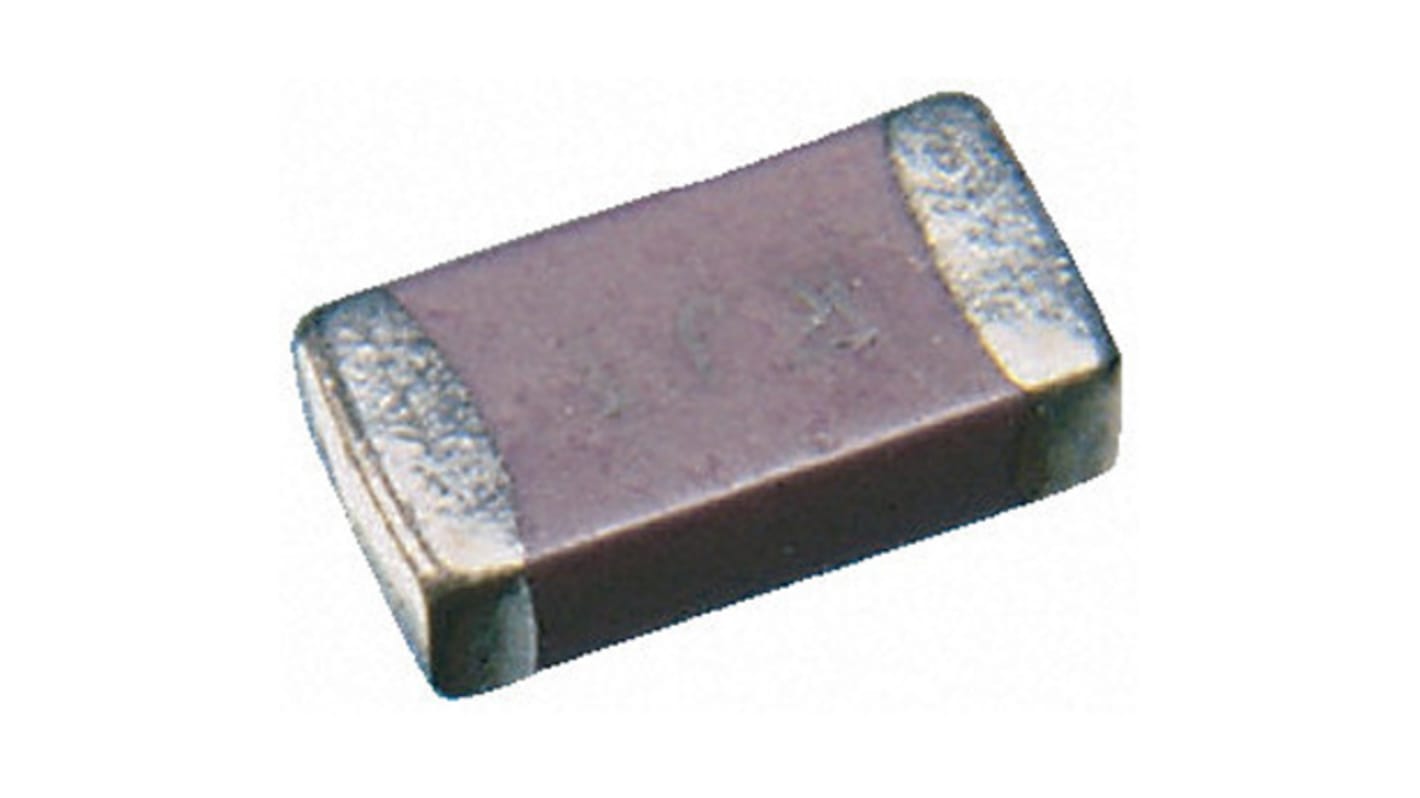Vishay 470pF Multilayer Ceramic Capacitor MLCC, 200V dc V, ±5% , SMD
- RS Stock No.:
- 652-1165
- Mfr. Part No.:
- VJ0805A471JXCAT
- Brand:
- Vishay

Bulk discount available
Subtotal (1 pack of 25 units)*
£5.35
(exc. VAT)
£6.425
(inc. VAT)
FREE delivery for orders over £50.00
Being discontinued
- Plus 7,275 unit(s) shipping from 24 November 2025
- Final 675 unit(s) shipping from 01 December 2025
Units | Per unit | Per Pack* |
|---|---|---|
| 25 - 225 | £0.214 | £5.35 |
| 250 - 475 | £0.128 | £3.20 |
| 500 - 1225 | £0.107 | £2.68 |
| 1250 - 2475 | £0.096 | £2.40 |
| 2500 + | £0.086 | £2.15 |
*price indicative
- RS Stock No.:
- 652-1165
- Mfr. Part No.:
- VJ0805A471JXCAT
- Brand:
- Vishay
Specifications
Technical Reference
Legislation and Compliance
Product Details
Find similar products by selecting one or more attributes.
Select all | Attribute | Value |
|---|---|---|
| Brand | Vishay | |
| Capacitance | 470pF | |
| Voltage | 200V dc | |
| Package/Case | 0805 (2012M) | |
| Mounting Type | Surface Mount | |
| Dielectric | C0G | |
| Tolerance | ±5% | |
| Dimensions | 2 x 1.25 x 1.45mm | |
| Length | 2mm | |
| Depth | 1.25mm | |
| Height | 1.45mm | |
| Series | VJ | |
| Minimum Operating Temperature | -55°C | |
| Maximum Operating Temperature | +150°C | |
| Select all | ||
|---|---|---|
Brand Vishay | ||
Capacitance 470pF | ||
Voltage 200V dc | ||
Package/Case 0805 (2012M) | ||
Mounting Type Surface Mount | ||
Dielectric C0G | ||
Tolerance ±5% | ||
Dimensions 2 x 1.25 x 1.45mm | ||
Length 2mm | ||
Depth 1.25mm | ||
Height 1.45mm | ||
Series VJ | ||
Minimum Operating Temperature -55°C | ||
Maximum Operating Temperature +150°C | ||
VJ0805 Series
The VJ series of ceramic capacitors from Vishay come in various capacitance values, case sizes and voltage ratings. With C0G (NPO) and X7R dielectric options available in this series, VJ ceramic capacitors can cater for a range of applications. The C0G versions are ultrastable and offer you a very low temperature coefficient of capacitance.
Product Application Information
Wet build process
Reliable Noble Metal Electrode (NME) system
Excellent ageing characteristics
Reliable Noble Metal Electrode (NME) system
Excellent ageing characteristics
Suitable applications for these ceramic capacitors include surge suppression, filtering and decoupling. VJ series ceramic capacitors are ideal for use in sensor and scanner applications and also in timing and tuning circuits.
0805 Range
Nickel barrier terminations covered with a layer of plated Tin (NiSn). Applications include mobile phones, video and tuner designs, COG/NPO is the most popular formulation of the "temperature compensating", EIA Class I ceramic materials, X7R, X5R formulations are called "temperature stable" ceramics and fall into the EIA Class II materials, Y5V, Z5U formulations are for general purpose use in a limited temperature range, EIA Class II materials; these characteristics are ideal for decoupling applications.
Related links
- Vishay 470pF Multilayer Ceramic Capacitor MLCC ±5% , SMD
- Vishay 470pF Multilayer Ceramic Capacitor MLCC ±5% , Through Hole
- Vishay 470pF Multilayer Ceramic Capacitor MLCC ±5% , SMD
- Vishay 470pF Multilayer Ceramic Capacitor MLCC 5% , SMD
- Vishay 470pF Multilayer Ceramic Capacitor MLCC ±5% , SMD
- Yageo 470pF Multilayer Ceramic Capacitor MLCC ±5% , SMD
- KYOCERA AVX 470pF Multilayer Ceramic Capacitor MLCC ±5% , SMD
- Vishay 470pF MLCC 5% , SMD
